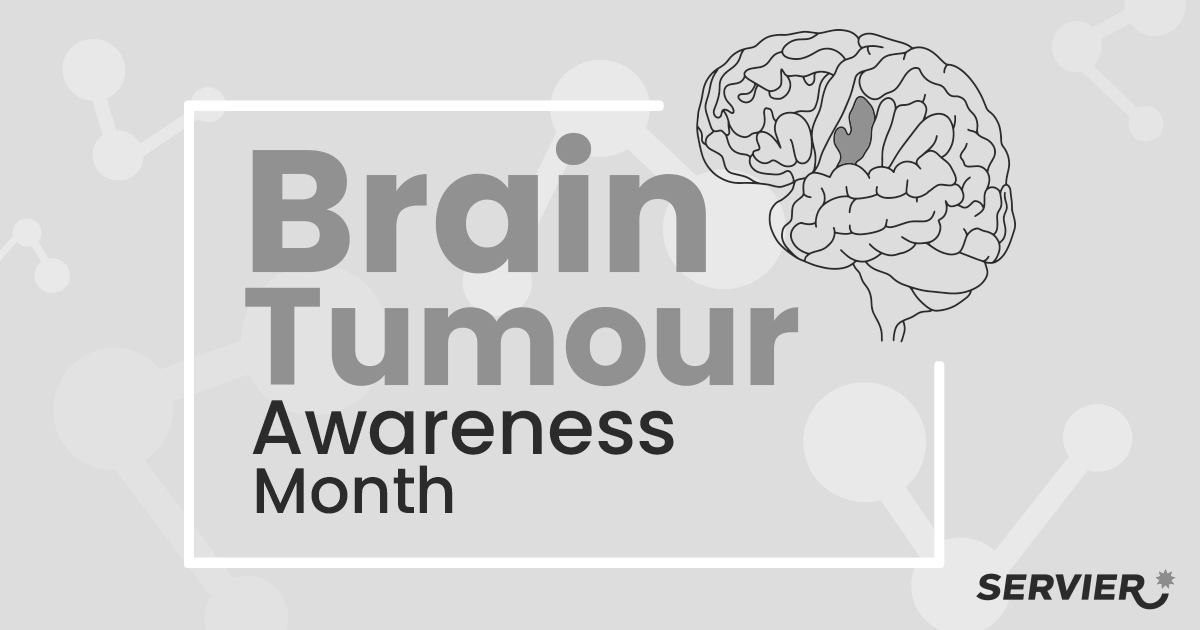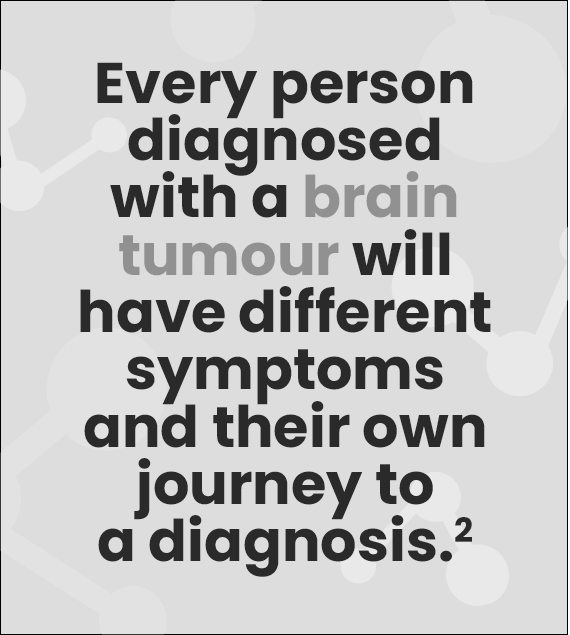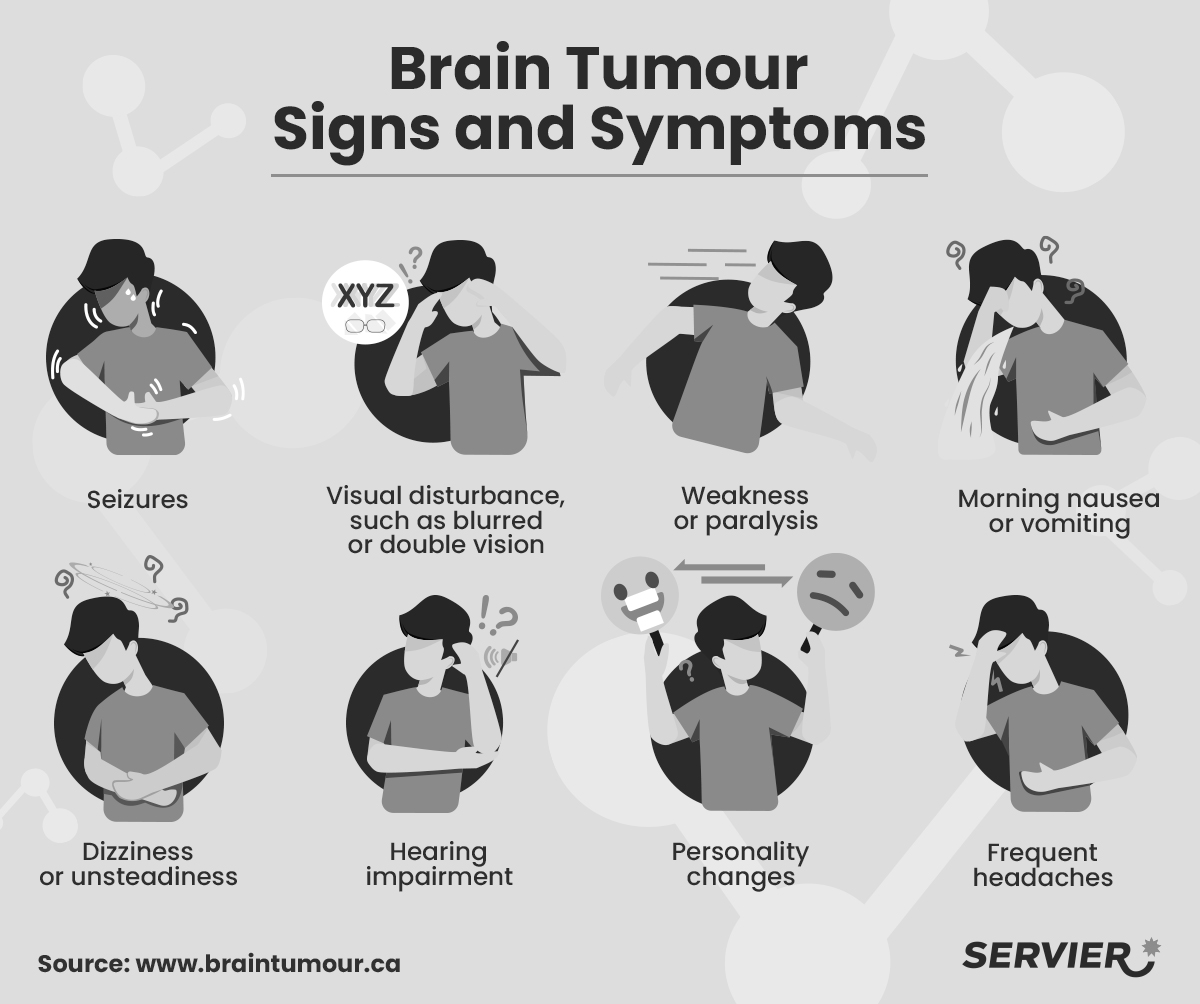
Servier is dedicated to advancing research in the field of gliomas, the most common malignant type of brain tumour1.

Sometimes these glitches are because of tumours, a growth of abnormal cells within or around the brain. There are over 120 different types of brain tumours, but at Servier, our research focuses on gliomas.
What is a glioma?
According to the Mayo Clinic3, the cells in a glioma look like healthy brain cells called glial cells, which surround nerve cells and help them function. As a glioma grows, it forms a mass of cells called a tumour, which can grow to press on brain or spinal cord tissue and cause symptoms, depending on the affected part of the brain or spinal cord. Since gliomas are located in the control centres of thoughts, emotions and movements, they can dramatically affect an individual’s physical and cognitive abilities and quality of life.
Some gliomas grow slowly and aren’t considered to be cancers, while others are cancerous or malignant. Malignant gliomas grow quickly and can invade healthy brain tissue. Some affect children, while others affect adults.
According to the Brain Cancer Foundation of Canada, gliomas, although rare, are the most common primary malignant or cancerous brain tumours with approximately 32,360 cases of glioma in Canada between 1992 and 2010.
There are three main types of gliomas: glioblastoma, astrocytoma and oligodendroglioma. Glioblastomas mainly occur in older adults, and average survival, even with aggressive treatment, is less than one year. On the contrary, patients with astrocytoma and oligodendroglioma are usually young adults who can expect to live longer with the disease.
For a simplified understanding of gliomas, we invite you to watch this instructional video by Dr. David Grew, a Connecticut-based radiologist dedicated to clearly demystifying cancer and cancer treatment.
Servier’s research advances inspire hope
At Servier, our Research and Development (R&D) focuses on types of gliomas called astrocytoma and oligodendroglioma. The current treatments may have significant long-term side effects, and this is the reason why Servier is developing therapies that help to manage the progression of the disease to ensure that the patients maintain a quality of life. For young adults, who may live many years with their disease, that’s a significant advance.
For these patients and their loved ones, each scientific advance can seem like a miracle. But these miracles are really the result of the determination, devotion and insight of cancer researchers, the unsung heroes of the cancer world.
Servier is committed to oncology R&D
Since cancer never stops, Servier’s commitment to the understanding and treatment of complex brain cancers is tireless. That’s why we invest over half of our R&D budget in oncology. Our dedicated team of researchers and scientists never stops working to push the boundaries of medical knowledge so we can develop innovative solutions to complex cancers like glioma.

Think smart: Help us make a difference
This May, Brain Tumour Awareness Month, Servier Canada encourages you to join the conversation about brain tumours. Sign up for a walk, host an event, volunteer or donate. Together, we can drive support for research initiatives, the promise of improved treatments and, ultimately, a brighter future for those living with a dire brain tumour diagnosis, like a glioma.
Now, that’s real intelligence.
For more information about Brain Tumour Awareness Month
Sources
1: Brain Tumor Foundation of Canada, https://www.braintumour.ca/facing-a-brain-tumour/facts-about-brain-tumours/, extracted on February 19, 2024.
2: Brain Tumor Foundation of Canada, https://www.braintumour.ca/facing-a-brain-tumour/ signs-symptoms/, extracted on February 19, 2024.
3: Mayo Clinic, https://www.mayoclinic.org/diseases-conditions/glioma/symptoms-causes/syc-20350251#:~:text=Glioma%20is%20a%20growth%20of,of%20cells%20called%20a%20tumor/, extracted on March 21, 2024



